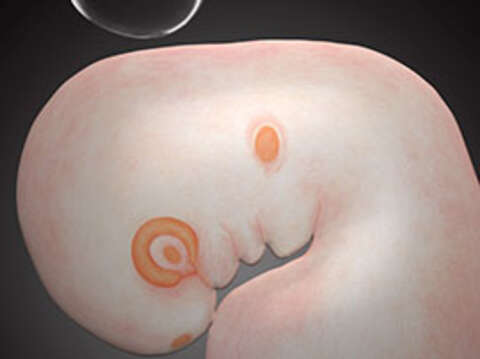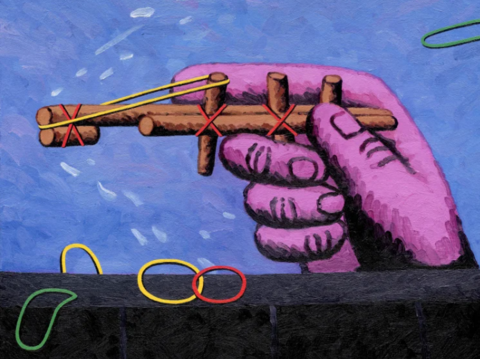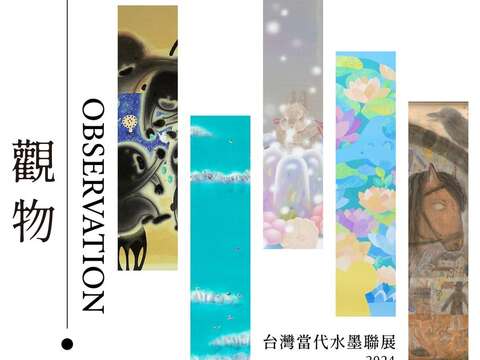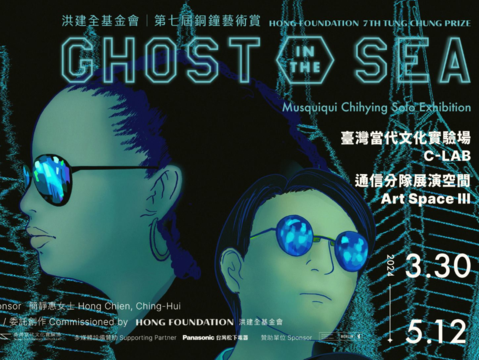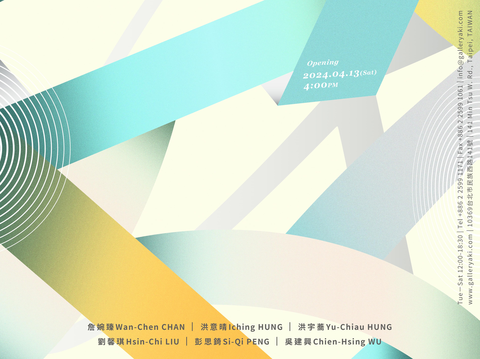Post date:2022-09-21
Updates:2022-09-21
644
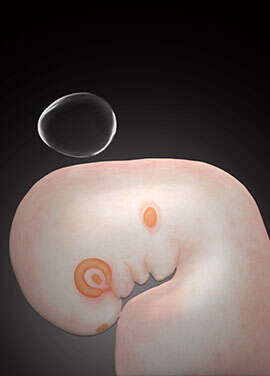
- Event Time
- 2022-09-03~2022-09-24Tue.-Sat. 11:00~ 19:00
- Event Location
- B1, No. 88, Yanchang Rd., Xinyi Dist., Taipei City Taiwan, R.O.C
“Müllerian” refers to the Müllerian ducts in the human body—they are a pair of new ducts formed six weeks into the human embryonic development, in both sexes. Up until the end of the sixth week, there’s no distinctive gender-specific appearance in the embryonic reproductive system. Then, from the seventh week onwards, embryos begin to diverge in their own developmental paths. “The differences between male and female have given rise to many discriminations and conflicts. And these differences lead to inequalities in social culture, language, and gender awareness. Müllerian ducts tell us that during the embryonic period, people are not that different. Is it possible, then, for us to relearn what we think about each other through artistic expression?”
In the Santa Embryo series, LIU Shih-Fen uses color pencils to depict the appearance of the head and neck of 8-week-old embryos by referencing medical textbooks. A total of 7 Santa Embryo paintings—each embryo with a saint-like halo behind them—are displayed in the ESLITE GALLERY VIP Room, as if alluding to the room as a womb that nurtures life while giving us a glimpse of how a human being evolves from a sexless embryo. LIU believes that human beings are rebellious in nature, “but embryos are sacred and holy in the hands of the Creator, untainted with the purity of life in its original, immaculate state.”
Born in 1964, LIU Shih-Fen began her career as a medical nurse at Taipei Veterans General Hospital in 1983 before leaving in 2009. In 1994, she started to draw illustrations for newspapers and magazines. In 1996, she was shortlisted in the Taipei Annual Arts Competition by the Taipei Fine Arts Museum, and again in the following year. In 1998, she was invited to participate in the Taipei Biennale – Site of Desire, and began juggling her dual identities as both a nurse and an artist. Her solo exhibition Clinical Path of Sphinx at ESLITE GALLERY in 2005 saw her bringing her own theological perspective into play.
In her years of working in the OBGYN department and pediatric operating room, she oftentimes came across the issues of gender and reproduction, which naturally became the subjects of her creations. At the same time, she gained insights on the duality of things from biology and theology. Tapping into images in mythology, biology and medicinal plants, she then attempted to explore and reflect on duality, for instance, the hermaphroditic snails in the Sheep Wandering series. Although snails have both male and female reproductive organs, they still need each other for reproduction; meanwhile, the goat-head human body inflicting violence on the snails reminds us of the socially-constructed hegemony over gender roles.
Just as the gender characteristics of human beings in the embryonic period, as well as of some creatures, are co-existent and inclusive, LIU’s Still-Life series portrays 12 hallucinogenic plants, such as poppy and kava pepper, that are both prescriptive medicines, but can also cause hallucinations or poisoning. “Instead of binary opposition, perhaps we can have the truth of both sides simultaneously.”
Over a decade has passed since her last solo exhibition. Today’s LIU Shih-Fen faces life with a “profound attitude that’s peaceful and composed” in contrast to her urgency to create in the past. “Back then, my creation was an effective practice of aesthetic experience; now, my creation is a response to divine grace.”
In the Santa Embryo series, LIU Shih-Fen uses color pencils to depict the appearance of the head and neck of 8-week-old embryos by referencing medical textbooks. A total of 7 Santa Embryo paintings—each embryo with a saint-like halo behind them—are displayed in the ESLITE GALLERY VIP Room, as if alluding to the room as a womb that nurtures life while giving us a glimpse of how a human being evolves from a sexless embryo. LIU believes that human beings are rebellious in nature, “but embryos are sacred and holy in the hands of the Creator, untainted with the purity of life in its original, immaculate state.”
Born in 1964, LIU Shih-Fen began her career as a medical nurse at Taipei Veterans General Hospital in 1983 before leaving in 2009. In 1994, she started to draw illustrations for newspapers and magazines. In 1996, she was shortlisted in the Taipei Annual Arts Competition by the Taipei Fine Arts Museum, and again in the following year. In 1998, she was invited to participate in the Taipei Biennale – Site of Desire, and began juggling her dual identities as both a nurse and an artist. Her solo exhibition Clinical Path of Sphinx at ESLITE GALLERY in 2005 saw her bringing her own theological perspective into play.
In her years of working in the OBGYN department and pediatric operating room, she oftentimes came across the issues of gender and reproduction, which naturally became the subjects of her creations. At the same time, she gained insights on the duality of things from biology and theology. Tapping into images in mythology, biology and medicinal plants, she then attempted to explore and reflect on duality, for instance, the hermaphroditic snails in the Sheep Wandering series. Although snails have both male and female reproductive organs, they still need each other for reproduction; meanwhile, the goat-head human body inflicting violence on the snails reminds us of the socially-constructed hegemony over gender roles.
Just as the gender characteristics of human beings in the embryonic period, as well as of some creatures, are co-existent and inclusive, LIU’s Still-Life series portrays 12 hallucinogenic plants, such as poppy and kava pepper, that are both prescriptive medicines, but can also cause hallucinations or poisoning. “Instead of binary opposition, perhaps we can have the truth of both sides simultaneously.”
Over a decade has passed since her last solo exhibition. Today’s LIU Shih-Fen faces life with a “profound attitude that’s peaceful and composed” in contrast to her urgency to create in the past. “Back then, my creation was an effective practice of aesthetic experience; now, my creation is a response to divine grace.”
 LIU Shih-Fen: Müllerian’s Garden
LIU Shih-Fen: Müllerian’s Garden